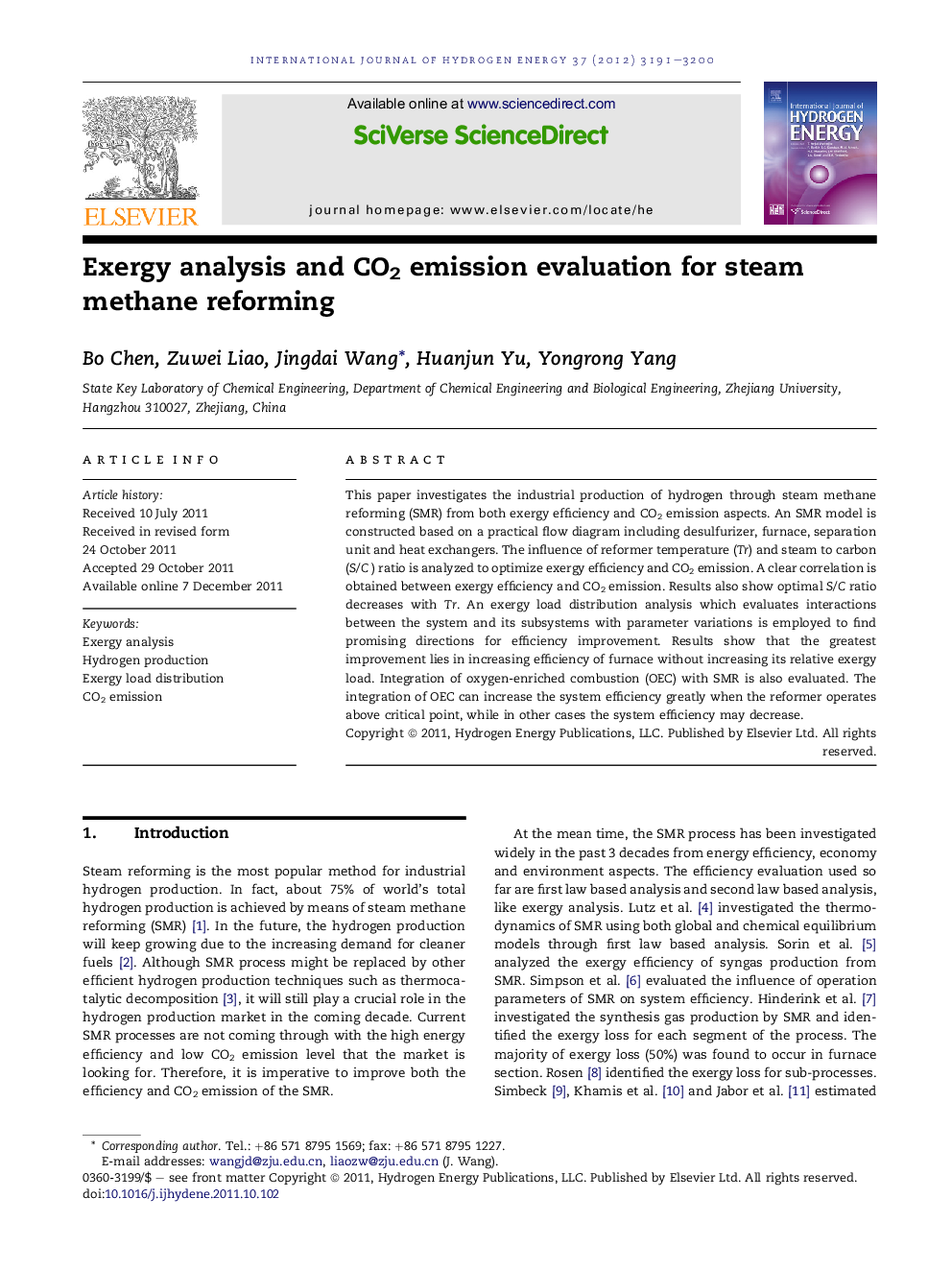| Article ID | Journal | Published Year | Pages | File Type |
|---|---|---|---|---|
| 1282324 | International Journal of Hydrogen Energy | 2012 | 10 Pages |
This paper investigates the industrial production of hydrogen through steam methane reforming (SMR) from both exergy efficiency and CO2 emission aspects. An SMR model is constructed based on a practical flow diagram including desulfurizer, furnace, separation unit and heat exchangers. The influence of reformer temperature (Tr) and steam to carbon (S/C) ratio is analyzed to optimize exergy efficiency and CO2 emission. A clear correlation is obtained between exergy efficiency and CO2 emission. Results also show optimal S/C ratio decreases with Tr. An exergy load distribution analysis which evaluates interactions between the system and its subsystems with parameter variations is employed to find promising directions for efficiency improvement. Results show that the greatest improvement lies in increasing efficiency of furnace without increasing its relative exergy load. Integration of oxygen-enriched combustion (OEC) with SMR is also evaluated. The integration of OEC can increase the system efficiency greatly when the reformer operates above critical point, while in other cases the system efficiency may decrease.
► We model an industrial steam methane reforming process with steam byproduct. ► We investigate the process at subsystem level. ► The greatest improvement lies in increasing the efficiency of the furnace without increasing its relative exergy load. ► The CO2 emission varies inversely with system exergy efficiency. ► The oxygen enrichment combustion will only benefit the process above the critical point.
